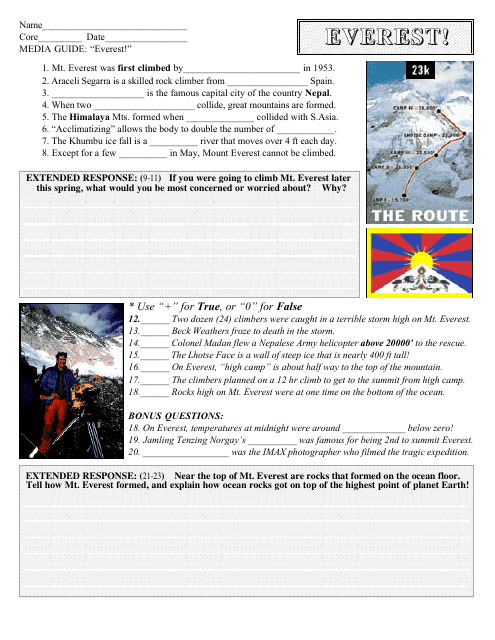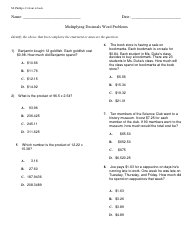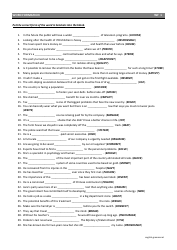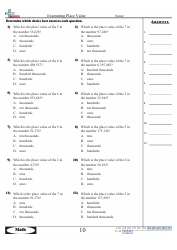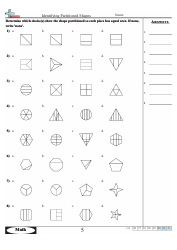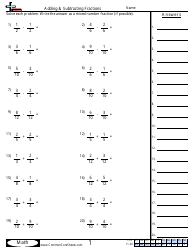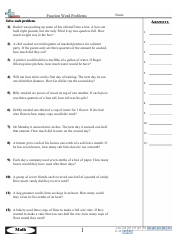Everest Geography Worksheet With Answer Key
The Everest Geography Worksheet with Answer Key is a resource used for teaching and learning about the geography of Mount Everest. It provides questions and answers to help students understand various aspects of the mountain's geography.
The Everest Geography Worksheet with Answer Key is typically filed by the teacher or instructor who assigned the worksheet to the students.
FAQ
Q: What is the elevation of Mount Everest?
A: The elevation of Mount Everest is 29,029 feet (8,848 meters).
Q: What is the highest mountain in the world?
A: Mount Everest is the highest mountain in the world.
Q: What is the official language of Nepal?
A: The official language of Nepal is Nepali.
Q: What is the official language of China?
A: The official language of China is Mandarin.
Q: What are the challenges faced by climbers attempting to summit Mount Everest?
A: Challenges faced by climbers include extreme weather conditions, altitude sickness, and physical exhaustion.
Q: Who was the first person to reach the summit of Mount Everest?
A: Sir Edmund Hillary of New Zealand and Tenzing Norgay, a Sherpa of Nepal, were the first to reach the summit of Mount Everest on May 29, 1953.
Q: How many people have successfully reached the summit of Mount Everest?
A: As of 2020, over 5,000 people have successfully reached the summit of Mount Everest.
Q: What is the climate like on Mount Everest?
A: The climate on Mount Everest is extremely harsh, with temperatures often reaching below freezing and high winds.
Q: Why is Mount Everest such a popular destination for climbers?
A: Mount Everest is popular for climbers because of its status as the highest mountain in the world, providing a great challenge and sense of accomplishment.
Q: What is the death zone on Mount Everest?
A: The death zone on Mount Everest refers to the area above 26,000 feet where the lack of oxygen makes it extremely difficult for climbers to survive for long periods.
Q: What is the role of Sherpas in climbing Mount Everest?
A: Sherpas are local guides who provide essential support to climbers, including carrying heavy loads, setting up camps, and guiding the way on the mountain.
Q: What are some lesser-known facts about Mount Everest?
A: Some lesser-known facts about Mount Everest include the fact that it is still growing about 4 millimeters per year and that there is an estimated 200 dead bodies of climbers still on the mountain.
Q: Can anyone climb Mount Everest?
A: Climbing Mount Everest requires physical fitness, mountaineering experience, and a permit from the Nepalese or Chinese government, so not everyone is able to climb it.
Q: What is the most dangerous part of climbing Mount Everest?
A: The most dangerous part of climbing Mount Everest is often considered the Khumbu Icefall, where crevasses and unstable ice pose significant hazards.
